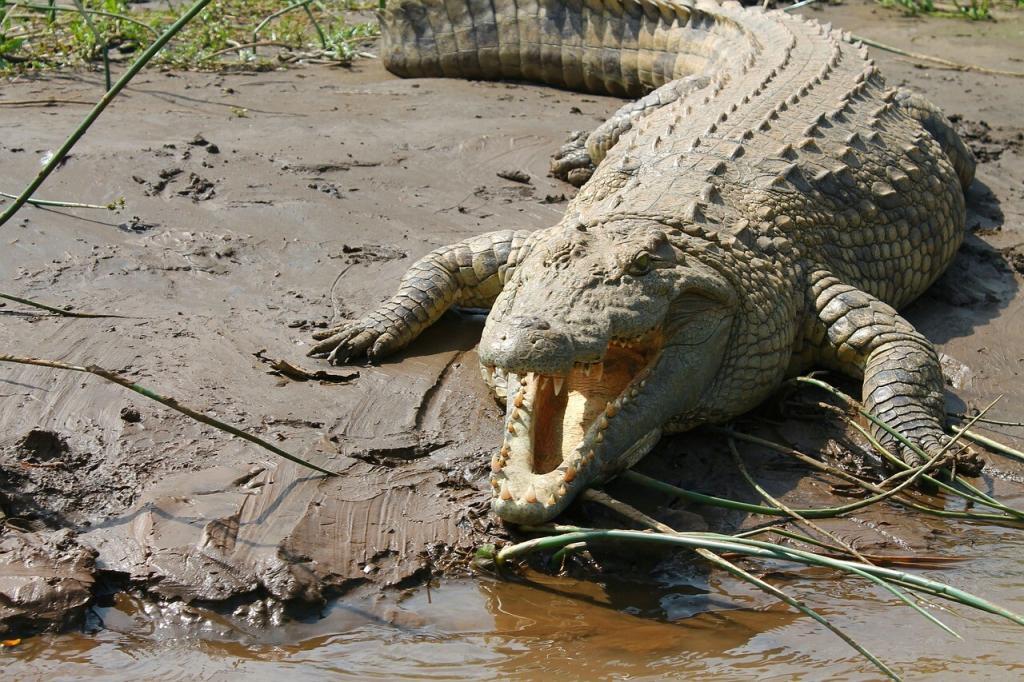
Are There Crocodiles in Serengeti?
Yes, crocodiles are a significant part of the Serengeti’s diverse wildlife and play an important role in its ecosystem. These formidable reptiles are primarily found in the rivers of the Serengeti, most notably the Grumeti and Mara rivers, where they await the annual migration of wildebeests and zebras to hunt their prey. But there’s much more to these ancient creatures than their predatory reputation. Let’s dive into the role of crocodiles in the Serengeti.
1. Nile Crocodile: The Apex Predator
The species of crocodile found in the Serengeti is the Nile crocodile (Crocodylus niloticus), one of the largest and most powerful reptiles in the world. Fully grown Nile crocodiles can reach lengths of up to 20 feet (6 meters) and weigh over 1,600 pounds (725 kilograms). Their size, power, and cunning make them formidable predators, especially during the Great Migration, when thousands of wildebeests, zebras, and other herbivores must cross crocodile-infested rivers.
2. River Crossings and the Great Migration
The most dramatic interactions between crocodiles and other animals in the Serengeti occur during the Great Migration, particularly at river crossing points in the Grumeti and Mara rivers. As wildebeests and zebras make their way across these dangerous waters, crocodiles lie in wait just below the surface. The crossings are chaotic, and while many animals make it across safely, others fall prey to the lurking crocodiles. This spectacle is often highlighted in wildlife documentaries due to its intense and unpredictable nature.
These river crossings are crucial for the crocodiles’ survival, as they allow them to store up energy in the form of fat reserves. After a successful hunt, crocodiles can go for months without eating, relying on the massive amount of food consumed during these crossings.
3. Behavior and Hunting Tactics
Crocodiles are patient hunters. They often remain still for hours, sometimes even days, waiting for the perfect moment to strike. Their stealthy approach involves hiding beneath the water’s surface, with only their eyes and nostrils visible, ensuring they remain almost invisible to unsuspecting prey. When the time is right, they launch themselves out of the water with incredible speed, using their powerful jaws to grab hold of their prey.
Crocodiles are known for their “death roll,” a violent spinning manoeuvre that helps them subdue larger animals. Once a wildebeest or zebra is captured, the crocodile drags it underwater, where it drowns before being torn apart.
4. Role in the Ecosystem
While their predatory nature is often the focus, crocodiles play an essential role in maintaining the balance of the Serengeti ecosystem. As apex predators, they help regulate the populations of herbivores, particularly during the migration. By removing weaker individuals from the population, they contribute to the overall health of species like wildebeests and zebras.
Additionally, crocodiles are scavengers, cleaning up carcasses that might otherwise spread disease. When they consume a kill, very little goes to waste. Other animals, such as vultures and smaller predators, often benefit from the remains of a crocodile’s meal, contributing to the Serengeti’s complex web of life.
5. Crocodile Conservation
Despite their fearsome reputation, Nile crocodiles face threats from habitat loss and human activities. In some areas, crocodile populations have declined due to overfishing and water pollution, which affects their food sources. The growing human population around the Serengeti can also lead to increased conflict, as people encroach on crocodile habitats or target them for their valuable hides.
Efforts are being made to protect crocodiles and their habitats within the Serengeti ecosystem. By ensuring that rivers remain healthy and free from excessive human interference, conservationists aim to maintain a stable population of these ancient reptiles for generations to come.
Crocodiles are an integral part of the Serengeti’s wildlife, contributing to both the drama of the Great Migration and the delicate balance of the ecosystem. These powerful reptiles are not just fearsome predators; they also play a vital role in maintaining the health of their environment. Whether observed during a thrilling river crossing or basking on the banks of the Grumeti River, crocodiles are a reminder of the wild and untamed nature of the Serengeti.





